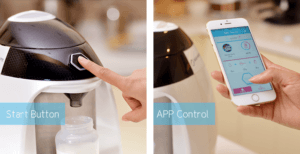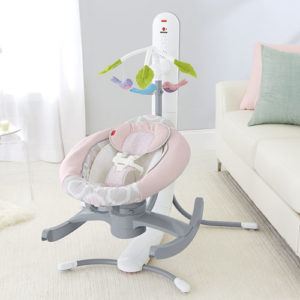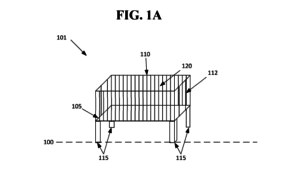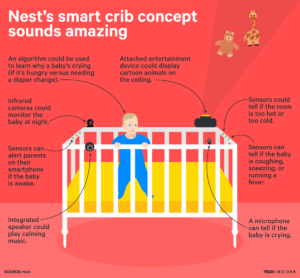Are smart cribs the solution for exhausted parents?

Exhausted parents around the world have probably fantasized, at some point, about a crib that could automatically rock their crying infants to sleep. Of the many firms currently trying to win the hearts of new parents is Google’s Nest Lab, an interesting example of a company that has recognized and attempted to mitigate the pain points that parents of newborns often face.
Smart products are changing the baby products industry
For some time, baby monitors were among some of the most popular consumer technology products, but over the past years, the baby products industry has seen an additional number of innovative products surface. For example, start-up company Wicoz produced Milk Nanny, the world’s first smart baby formula milk maker, which takes about fifteen seconds to measure out the powder and water and heat and de-clump the resulting formula, based on the formula’s pre-inputted specifications and directions [1]. In addition, Fisher Price also chose to differentiate itself by rolling out a 4-in-1 Smart Connect Cradle ‘n Swing, a baby rocker controlled by a smartphone. Using the accompanying app, parents can control the speed, as well as start and stop the cradle from the comfort of their own seats without waking up the baby [2].


How is Nest Labs trying to create value to differentiate themselves?
Of the many firms currently trying to win the hearts of new parents is Google’s Nest Lab, an interesting example of a company that has recognized and attempted to mitigate the pain points that parents of newborns often face. Exhausted parents around the world have probably fantasized, at some point, about a crib that could automatically rock their crying infants to sleep. And Nest Lab’s recent patent shows just that – a smart baby crib with app connectivity that can help parents monitor their child’s sleep, temperature, and health [3].

It all started when Nest Labs wondered whether sensors, robotic technology, and artificial intelligence could help babies and their drained parents get more sleep. The result was a smart crib decorated with infrared cameras and sensors to detect daily activities, such as crying and sleeping, alerts for diaper changes, and uncommon movement. In addition, it comes with a LCD/LED monitor that the parents have full control over. The product is essentially a combination of a conventional crib design with an extremely high-end baby monitoring system, but what makes it unique is its use of the sensors that can detect and track the baby’s movement patterns and convert it into useful data [4].
Unlike most traditional baby monitors that simply keep parents plugged in and reassured, Nest’s smart crib uses the data drawn from the product’s technology and attempts to perform some additional functions that would typically be carried out by parents. For example, a crying baby can be soothed without the parents having to rush over to calm it. When the crib detects that the baby is crying, an attached projector screen will display cartoons, as well as play music played at a volume that is determined based on the level of ambient sound detected in the room by an attached microphone. In addition, sensors can also monitor the air quality in the baby’s room, which can be adjusted accordingly when connected to other consumer technology products (air conditioner, humidifier, air purifier, etc.) [4].

Concerns going forward. How would new moms actually feel about this?
When Google bought Nest, it acquired the home-temperature-control process of the smart home innovator [5], and although not yet on the market, this new smart crib patented idea is most likely a part of Google’s larger smart home system. While Nest’s patent doesn’t guarantee that a product will come anytime soon, or at all, the move seems to make sense for the company, as baby-related technology is on the rise[6], and few major developers have entered the market.
However, as cutting-edge as this technology may be, it poses some challenges to consider before plunging into the market.
. With all of the added technology and features, the crib will be several times more expensive than the retail price of the average crib
. Aside from the steep price point, there is an enormous risk that parents may not actually want these functionalities. Does relinquishing some of their parent duties to a piece of technology diminish their bond with their baby?
. Some parents may raise questions regarding the safety of the crib.
. In addition, while the enhanced capabilities may offer parents some benefits, the complexity of use of the product may actually result in a negative effect.
. The machine will not always be 100% accurate about the reasons that result in the actions it carries out.
Overall, it is exciting that Nest is attempting to incorporate smart baby products into the rest of the smart home system. While there are many risks associated with this opportunity, it will be possible to Nest to mitigate many of them by really taking into account what the customer wants. A potential next step may be to use the gathered data over time to produce custom solutions for the user, so that it seems that the product is growing with the baby, rather than remaining static.
(794 words)
[1] “Whip Up a Baby Bottle in 15 Seconds With This Smart Machine”, http://www.digitaltrends.com/home/milk-nanny-is-a-smart-baby-bottle-appliance/
[2] Digital Trends: “Baby Einstein: You Can Control This Smart Baby Rocker From Your Phone”,
http://www.digitaltrends.com/home/control-the-4-in-1-smart-connect-cradle-n-swing-with-a-smartphone/
[3] Business Insider: “Google Could Be Working on a Smart Crib..”
http://www.businessinsider.com/google-patents-smart-crib-2016-6
[4] International Business Times: “Google Patent Shows Off Smart Baby Crib..”
[6] The Statistics Portal: U.S. Baby Care Market, https://www.statista.com/topics/1259/baby-care-market



I was hoping for so much when I saw this headline – and google is trying to deliver! Its a great concept and certainly a good first swing at the problem set. Have there been any proofs of concept put into trial yet? I’d be interested to see how this is being used in practical application by real, stressed-out, parents.
I agree – the price point may very well be prohibitive. That’s not to say that this won’t find a market – gadgets like this always find markets, especially around Silicon Valley moms…hehe. I’d be interested to see what this system could do when moved beyond the ‘soothing’ problems. Can it monitor the ambient temperature and the baby’s temperature to see if the child is running a fever? Could it be preloaded with diapers/wipes and make refill purchases on Amazon Mom when supplies run low? I bet weight sensors could be added to monitor food intake and alert for other health issues – even SIDS! Certainly nothing will replace a caring, alert parent – but this can help.
coff,
Although I have no children of my own and therefore not on the market for such products, I thought the advancements in this industry were very cool to learn about. It seems like main players in the industry have been lacking innovation for quite some time. Given that parents are still sticking formula filled bottles in the microwave and testing the temperature on their arms, technology has a true opportunity to enable parents in many facets. I wonder if this lack of advancement is an oversight or actually being done by design. As with most technology, manufacturers typically rely on younger demographics, such as millennials, to be the early adopters for new technology. With the average age of first time mothers progressively rising in the United States to around 26 years of age, these more tech savvy demographics are yet to enter the market of parenting products.[1] Could these companies be positioning and poising their technology to hit the market when their target demographics and low bar early adopters become the same person?
[1] “Average Age of First-Time Moms Keeps Climbing in the U.S.” (January 14, 2016) Public Health – NPR website, http://www.npr.org/sections/health-shots, accessed November 2016.
Great post Coff,
It seems that there are lots of companies trying to ease parents’ lives and Google is no exception. However, I am a bit skeptical about these innovations since it somehow erodes the relationship between kids and their parents. Researchers have shown that parents’ presence is fundamental to foster kids’ development. If parents are present but absent the impact in the development of the kids can even be negative.
In the 21st century it is becoming more and more difficult for parents in developed countries to balance family life with work life. I will therefore be very cautious about innovative solutions that disintermediate the relationship between parents and their kids.
[1] A Mother Far from Home. 2016. The Dangers of Present But Absent Parenting. [ONLINE] Available at: http://amotherfarfromhome.com/present-but-absent-parent/. [Accessed 20 November 2016].
Add to My References
Interesting post, Coff!
I’m a little more optimistic about the prospects of this new infant/toddler technology but also acknowledge potential drawbacks to allowing technology to interfere in the development of a child if it compromises the adult to child interaction. However, as a supplement rather than a complement to raising a child, I think there could be benefits. Like the first post, I was hopeful that maybe wearable technology could help prevent SIDS, but apparently the research is not conclusive [1]. However, due to busy schedules and more double income households, an interactive crib could provide meaningful interaction and supervision for a child that wasn’t possible only a few years ago. There just seems like there has to be a balance between using a crib as a tool or a crutch.
[1] Priest, David. “Can Tech Really SOlve SIDS?” It’s not so Simple. August 2016. CNET Smart Home. https://www.cnet.com/news/can-tech-really-solve-sids-its-not-so-simple/, assessed November 2016.